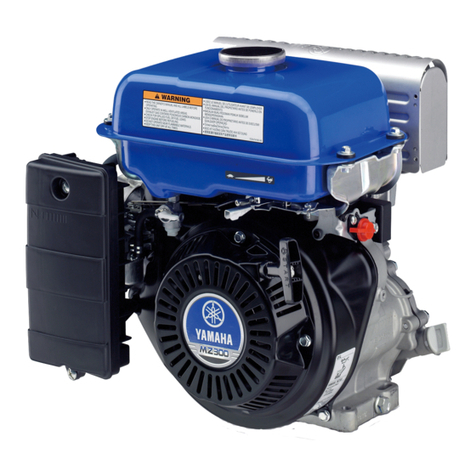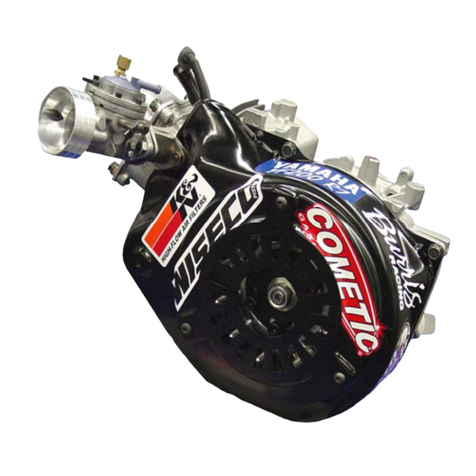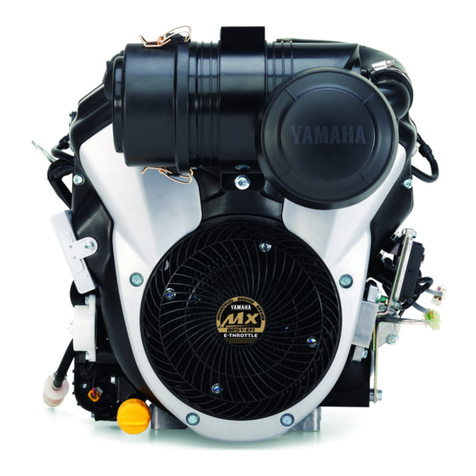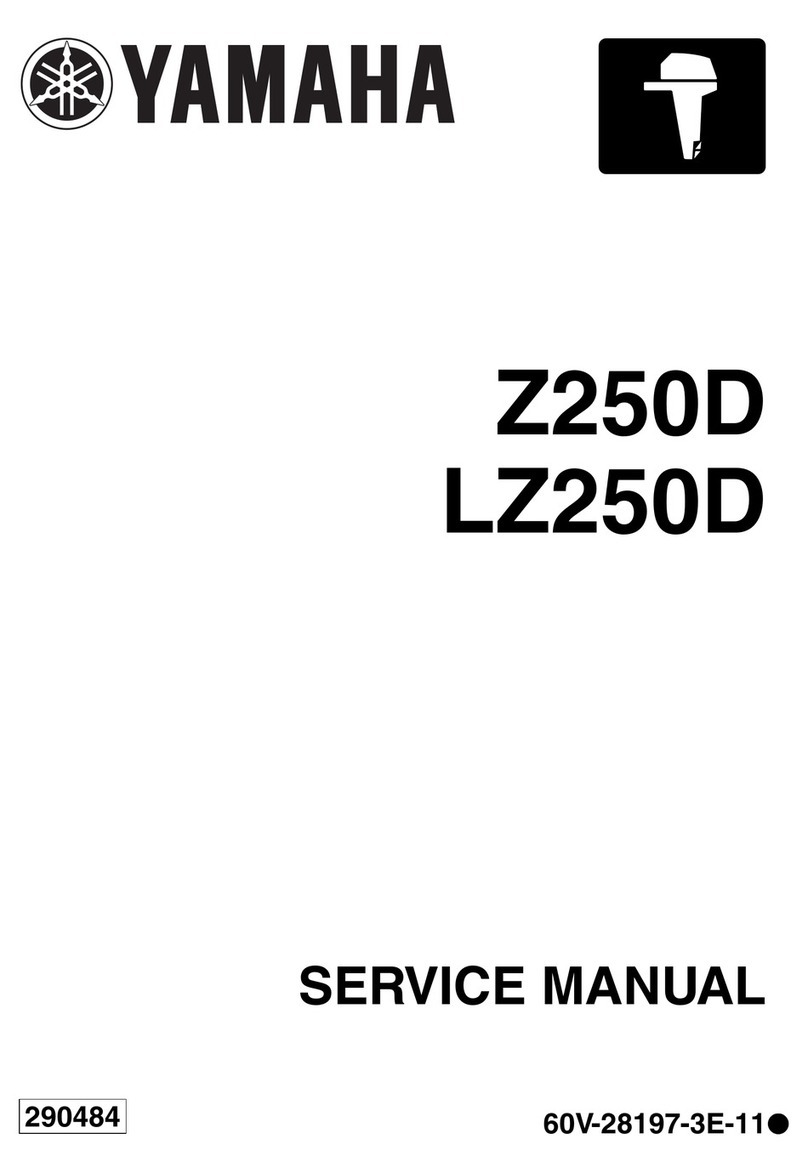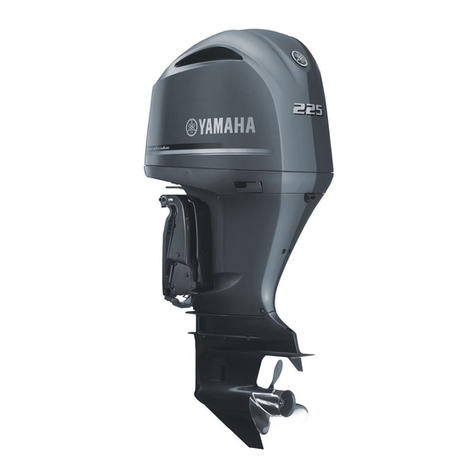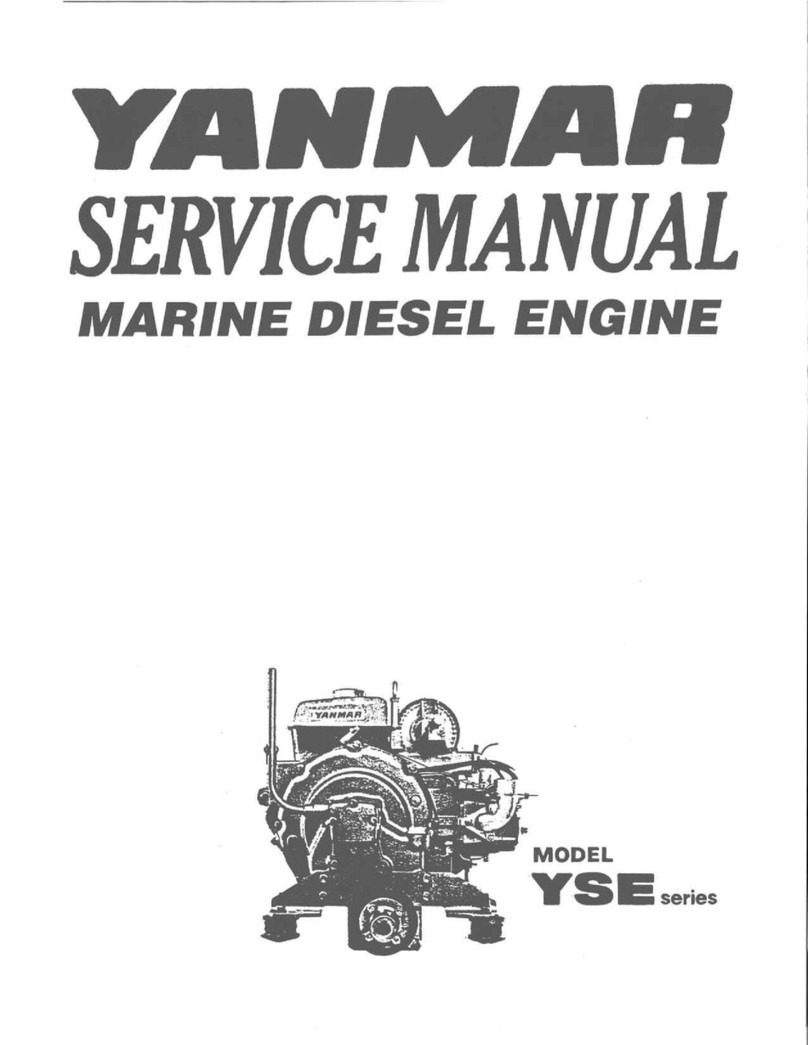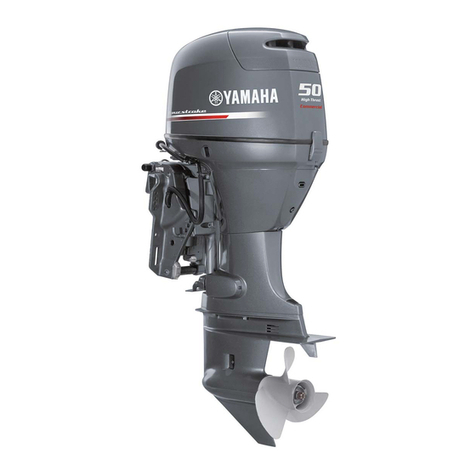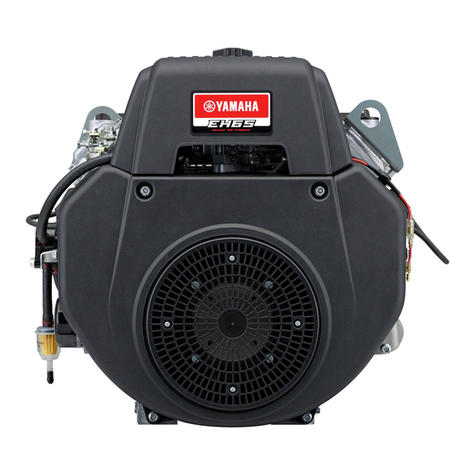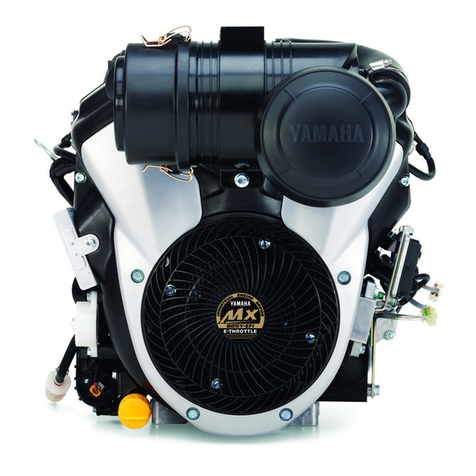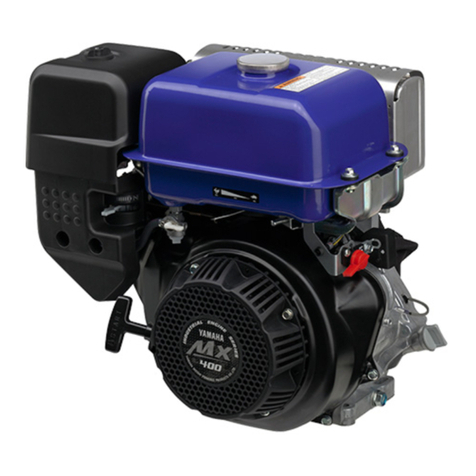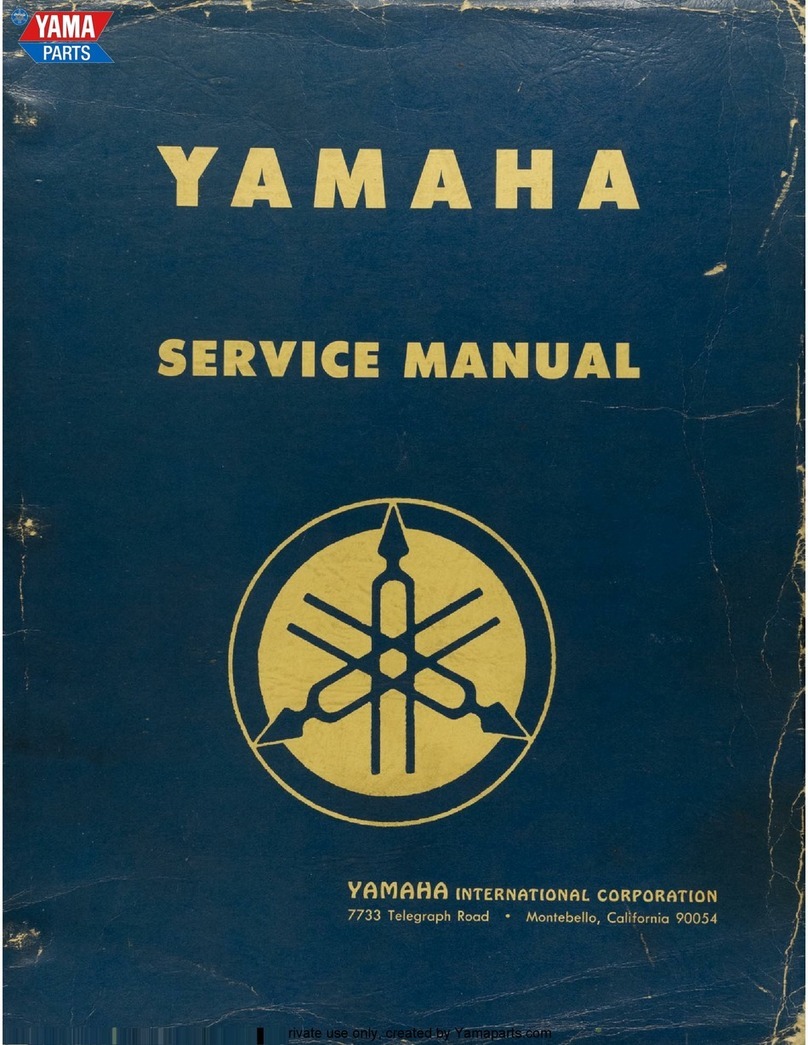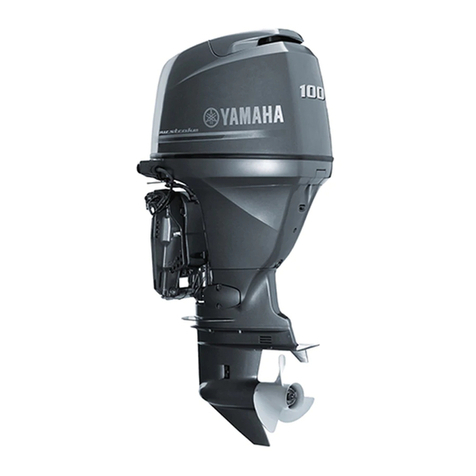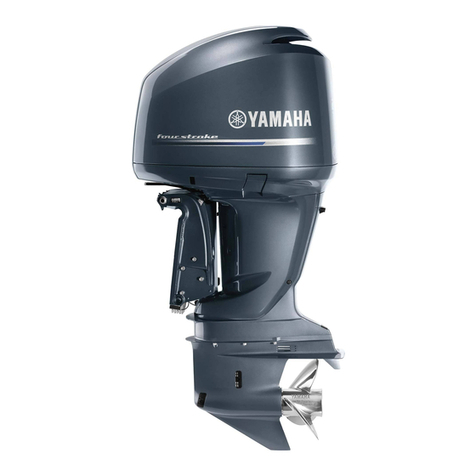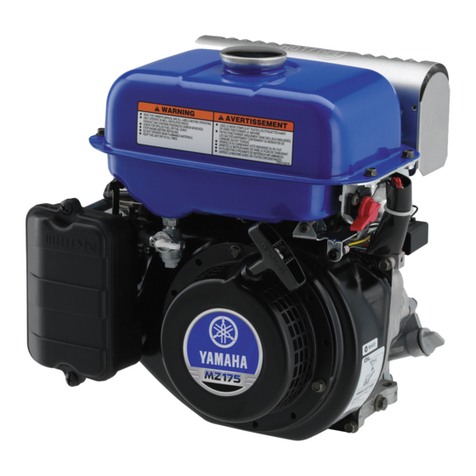
Table of contents
Safety information ..................................................1
Outboard motor safety ......................................... 1
Propeller .................................................................... 1
Rotating parts............................................................ 1
Hot parts.................................................................... 1
Electric shock............................................................ 1
Power trim and tilt ..................................................... 1
Engine shut-off cord (lanyard)................................... 1
Gasoline .................................................................... 1
Gasoline exposure and spills .................................... 1
Carbon monoxide...................................................... 1
Modifications............................................................. 1
Boating safety ...................................................... 1
Alcohol and drugs ..................................................... 1
Personal flotation devices (PFDs).............................. 1
People in the water.................................................... 1
Passengers................................................................ 2
Overloading ............................................................... 2
Avoid collisions.......................................................... 2
Weather ..................................................................... 2
Accident reporting..................................................... 2
Boat education and training ...................................... 2
Passenger training..................................................... 2
Boating safety publications....................................... 2
Laws and regulations ................................................ 2
Boating organizations........................................... 3
Basic boating rules (Rules of the road) ................ 3
Steering and sailing rules and sound signals............ 3
Rules when encountering vessels............................. 3
Other special situations............................................. 4
General information................................................6
Identification numbers record .............................. 6
Outboard motor serial number.................................. 6
Digital electronic control serial number..................... 6
Key number ............................................................... 6
EC Declaration of Conformity (DoC)..................... 7
CE Marking........................................................... 7
Compliance mark label......................................... 7
Read manuals and labels ..................................... 8
Warning labels .......................................................... 9
Specifications and requirements ........................10
Specifications..................................................... 10
Installation requirements .................................... 11
Boat horsepower rating........................................... 11
Mounting outboard motor ....................................... 11
Digital electronic control requirements .............. 11
Battery requirements.......................................... 11
Battery specifications.............................................. 11
Propeller selection.............................................. 12
Counter rotation models ......................................... 12
Start-in-gear protection...................................... 12
Engine oil requirements...................................... 12
Fuel requirements............................................... 13
Gasoline .................................................................. 13
Gasoline Additives................................................... 13
Anti-fouling paint................................................ 14
Outboard motor disposal requirements............. 14
Emergency equipment....................................... 14
Emission control information ............................ 14
Star labels................................................................ 14
Components .........................................................16
Components diagram ........................................ 16
Optional items ......................................................... 18
Helm Master®.......................................................... 21
Yamaha Security System (Y-COP).......................... 21
Digital Electronic Control box.................................. 21
Digital electronic control-active indicator................ 21
Digital electronic control-alert indicator .................. 22
Control lever ............................................................ 22
Free throttle switch.................................................. 22
Throttle friction adjuster .......................................... 22
Engine selector switch ............................................ 23
Engine shut-off cord (lanyard) and clip ................... 23
Main switch ............................................................. 23
Start/Stop switch panel........................................... 23
All Start/Stop switch panel...................................... 24
Power trim and tilt switch on digital electronic
control.................................................................. 24
Power trim and tilt switch on bottom cowling......... 24
Power trim and tilt switches .................................... 24
Tilt limiter ................................................................. 25
Tilt support lever for power trim and tilt model ....... 25
Cowling lock lever ................................................... 25
Flushing device ....................................................... 25
Fuel filter.................................................................. 26
Instruments and indicators .................................27
CL7 Display........................................................ 27
Engine control system .........................................29
Alert system ....................................................... 29
Helm Master control system alert ........................... 29
Digital Electronic Control alert................................. 29
Overheat alert.......................................................... 29
Low oil pressure alert .............................................. 30
Water separator alert............................................... 30
Installation ............................................................31
Installation.......................................................... 31
Mounting the outboard motor ................................. 31
Operation ..............................................................32
First-time operation............................................ 32
Filling engine oil....................................................... 32
Breaking in engine................................................... 32
Getting to know your boat....................................... 32
Checks before starting engine........................... 32
Fuel level ................................................................. 32
Removing top cowling............................................. 32
Fuel system ............................................................. 33
Controls................................................................... 33
Engine shut-off cord (lanyard) ................................. 33
Engine oil................................................................. 34
Outboard motor....................................................... 34
U6GR30E0.book Page 1 Thursday, April 12, 2018 9:28 AM
©2019 Yamaha Motor Corporation, U.S.A.


